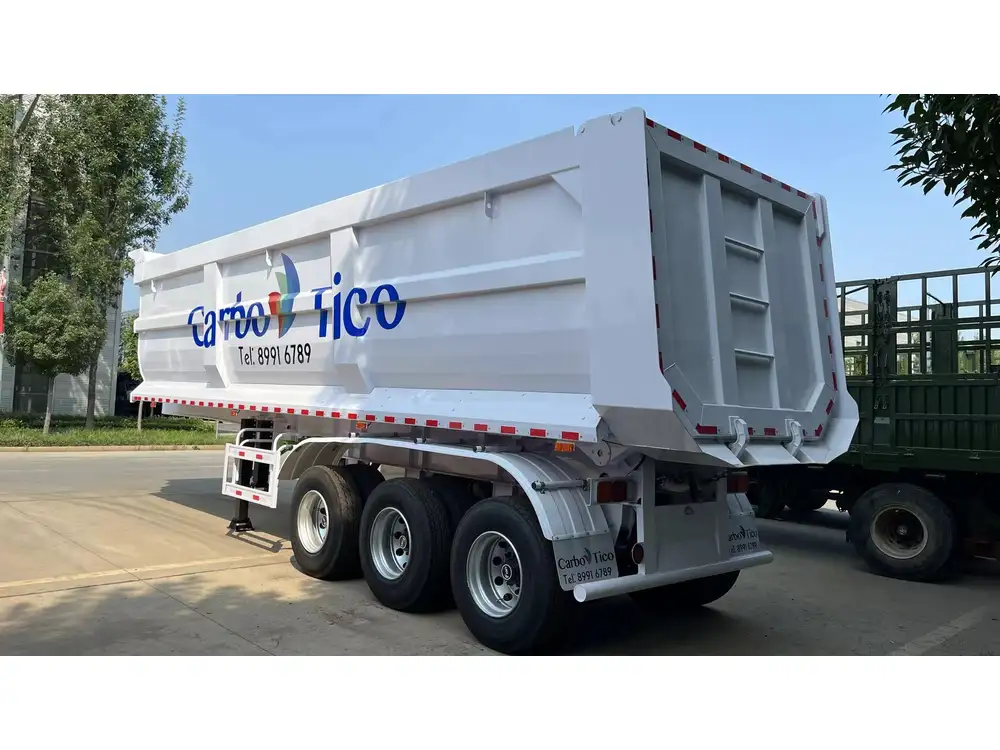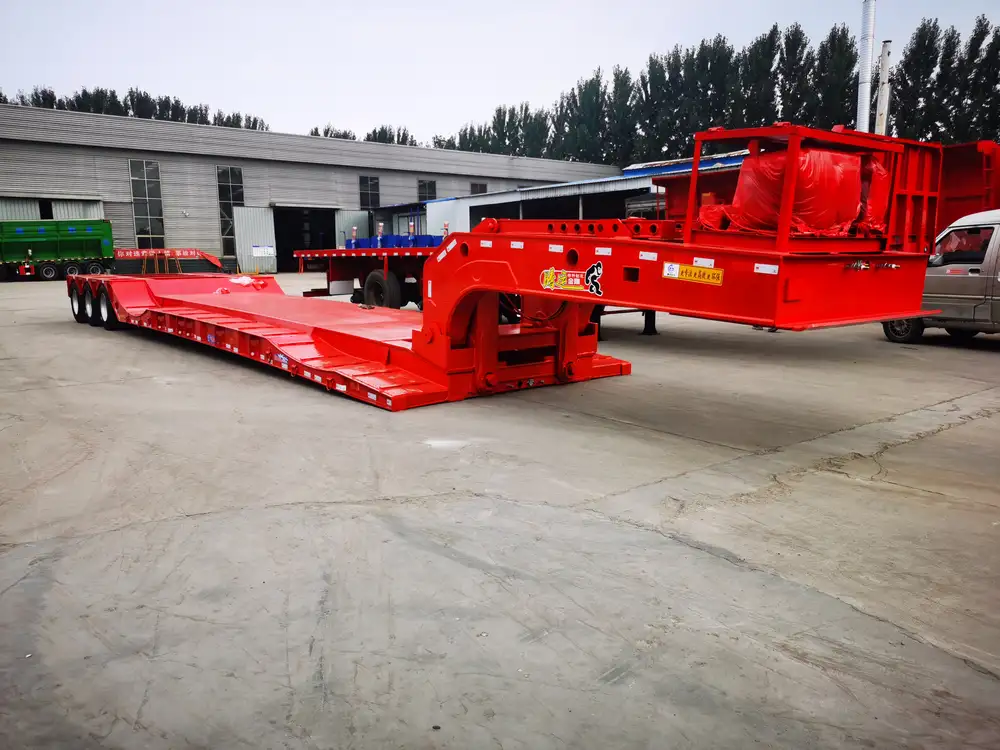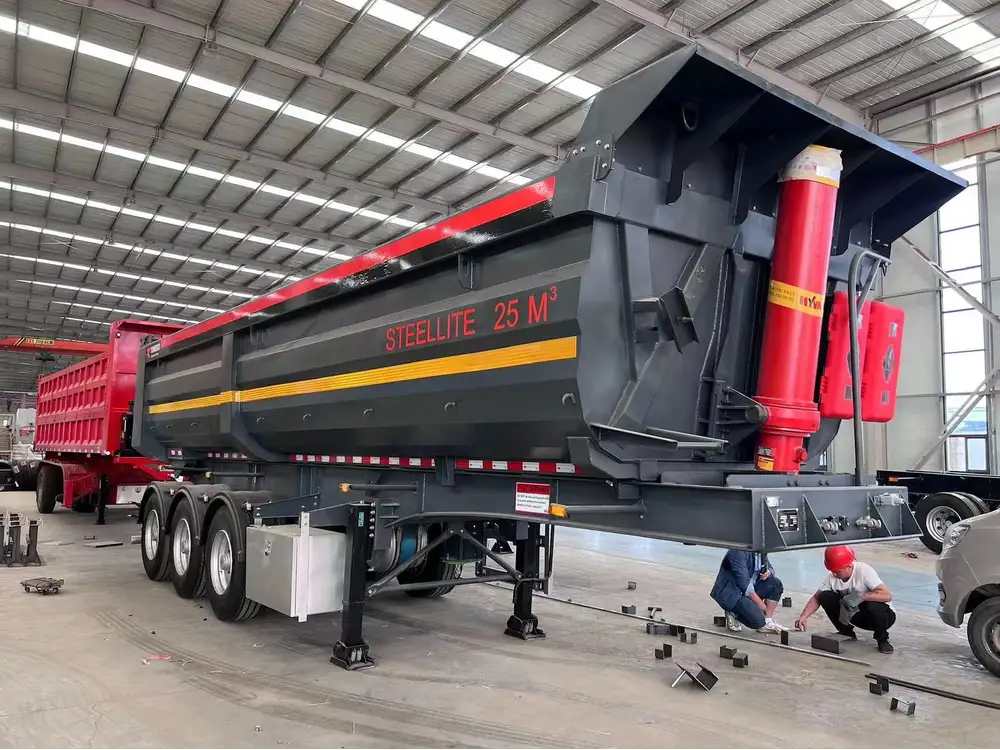When it comes to the heavy-duty world of transportation and construction, understanding the nuances of dump trailers is essential. As industry professionals and heavy equipment operators, we appreciate the importance of knowing how much material a dump trailer can carry, as it directly impacts productivity, efficiency, and the overall success of a project. In this comprehensive guide, we will delve into various aspects concerning the capacity of dump trailers, enabling you to make informed decisions regarding your hauling needs.
Understanding Dump Trailer Capacity
What is Dump Trailer Capacity?
Dump trailer capacity refers to the maximum weight that a dump trailer can safely transport. This capacity is crucial for operators seeking to avoid overloading, which can lead to mechanical failure, safety hazards, and legal consequences. Typically measured in tons, trailer capacity can range significantly based on design, materials, and the trailer’s structural integrity.

Factors Influencing Dump Trailer Capacity
Several factors play a vital role in determining how many tons a dump trailer can haul:
Trailer Size and Design: The physical dimensions of the trailer, including length, width, and height, directly affect its overall carrying capacity. Common sizes include:
- Smaller Dump Trailers: 5 to 10 tons
- Standard Dump Trailers: 10 to 16 tons
- Heavy-Duty Dump Trailers: 16 to 25 tons or more
Material Composition: The materials used in constructing the trailer – steel, aluminum, or composite – contribute to its weight and strength properties. Steel trailers typically offer higher weight ratings than their aluminum counterparts.
Axle Configuration: The number of axles influences weight distribution and stability. Common configurations are:
- Single Axle: Generally rated for 3 to 10 tons
- Tandem Axle: Typically ranges from 10 to 20 tons
- Triple Axle: Capable of hauling up to 30 tons or more
Brakes and Suspension Systems: Advanced brake systems and suspension enhancements can improve handling, allowing for higher capacities without compromising safety.
Intended Use: Dump trailers are built for various applications like hauling dirt, gravel, debris, or snow. Each use case has a different ideal capacity for efficiency.
Safety Considerations When Loading a Dump Trailer
Operating any heavy machinery requires attentive safety measures:
- Weight Limits: Always adhere to the manufacturer’s specifications, as exceeding weight limits can cause accidents and damage.
- Load Distribution: Ensure even weight distribution; improper loading can overturn the trailer during transport.
- Allowed Materials: Be mindful of the types of materials being transported. Some trailers are rated for specific materials, while others may require reinforcement depending on payload type.
Maximum Weight Ratings Breakdown
| Trailer Type | Capacity (Tons) | Common Uses |
|---|---|---|
| Light Duty Dump | 3 – 10 tons | Small construction jobs, landscaping |
| Standard Dump | 10 – 16 tons | General hauling, waste transport |
| Heavy Duty Dump | 16 – 25 tons | Large construction projects |
| Specialized Dump | 25+ tons | Custom configurations, industrial work |

A Deep Dive into Weight Limits: Regulations and Specifications
Legal Weight Limits
Understanding how weight limits are regulated is crucial for ensuring compliance and maintaining credibility in operations. Different countries and states have varying regulations governing maximum allowable weight on highways, which often includes:
Gross Vehicle Weight Rating (GVWR): The total weight a vehicle is rated to safely carry, including the trailer’s own weight. Overstepping this limit could lead to penalties.
Federal Bridge Formula: In the U.S., the Federal Bridge Formula restricts maximum weight based on axle configurations.
Common Legal Limits
For reference, here are typical weight limits across the United States:
- Federal Limits: Generally allows up to 80,000 pounds on interstate highways, subject to axle limits.
- State Variations: Each state may impose further restrictions – understanding local laws is imperative before hauling.

Consequences of Overloading
The repercussions of exceeding trailer capacities can be dire:
- Legal Penalties: Fines and penalties from law enforcement.
- Mechanical Failures: Increased wear and tear on mechanical components lead to early breakdowns.
- Safety Risks: Overloaded trailers are more prone to accidents, jeopardizing public safety and increasing liability.
Maximizing Efficiency: Choosing the Right Dump Trailer for Your Needs
Tailoring Your Choice to the Task
Choosing an appropriate dump trailer isn’t just about capacity; it involves considering the specific tasks you’ll be undertaking. Here’s a comparative analysis to guide you:
| Task | Suitable Dump Trailer Type | Remarks |
|---|---|---|
| Landscaping | Light Duty Dump | Ideal for transporting soil, mulch |
| Construction Projects | Standard Dump | Versatile for moving aggregates |
| Demolition Cleanup | Heavy Duty Dump | Required for large debris hauling |
| Bulk Material Transport | Specialized Dump | Best for transporting bulk materials like sand and gravel |

Key Specifications to Consider
When assessing dump trailers, consider these key specifications:
Towing Capacity: Ensure that the towing vehicle can safely handle the weight of the trailer when loaded.
Dump Mechanism: Hydraulic systems provide efficiency and ease of use. Assess if the chosen trailer utilizes electric or manual dump mechanisms.
Bed Material: The material affects durability and resistance to wear. Steel beds typically endure the rigors of construction better than aluminum.
Additional Features for Enhancing Performance
Selective features can further enhance the operational efficiency of dump trailers:
- Wireless Remote Control: Eases operation by allowing the driver to activate the dump feature from a distance.
- Sloped or V-shaped Beds: Aids in easy unloading, particularly for sticky materials like asphalt.
- Tarping Systems: Helps secure loads, preventing spills and ensuring compliance with transport regulations.
Advanced Operations: Ensuring Fleet Efficiency

Regular Maintenance for Optimal Performance
To ensure both capacity and longevity of dump trailers, routine maintenance is paramount. Key checks include:
- Hydraulic Systems: Regularly inspect hydraulic connections for leaks and functionality.
- Tires: Maintain proper inflation and inspect for wear to withstand heavy loads.
- Brakes: Ensure they are functioning correctly to facilitate safe stops, especially with heavy loads.
Smart Load Management Techniques
Implementing smart load management techniques can lead to improved efficiency and decreased operational costs:
- Pre-Loading Assessments: Measure materials before loading to optimize trailer fill.
- Weight Distribution Analysis: Utilize tools to calculate and adjust the distribution before departing.
- Real-Time Monitoring: Equip trailers with sensors to monitor load conditions and vehicle performance during transport.
Conclusion: The Tonage Truth of Dump Trailers
Determining how many tons a dump trailer can haul is not merely a matter of checking the numbers. It’s an intricate balance of design, laws, materials, and loads, punctuated by the overriding necessity of safety.
In this demanding industry, the right choice of dump trailer coupled with responsible operation leads to successful project outcomes. Understanding and assessing the full spectrum of factors—from construction specifics to regulatory limits—empowers dispatchers, project managers, and equipment operators alike to make informed, strategic decisions.
To achieve maximum efficiency and safety in your hauling operations, always remain attentive to detail—be it regarding the specifications of your dump trailer or the regulatory landscape affecting your operations. By doing so, you undoubtedly position yourself for enduring success and smooth transport operations in the heavy-duty arena.



